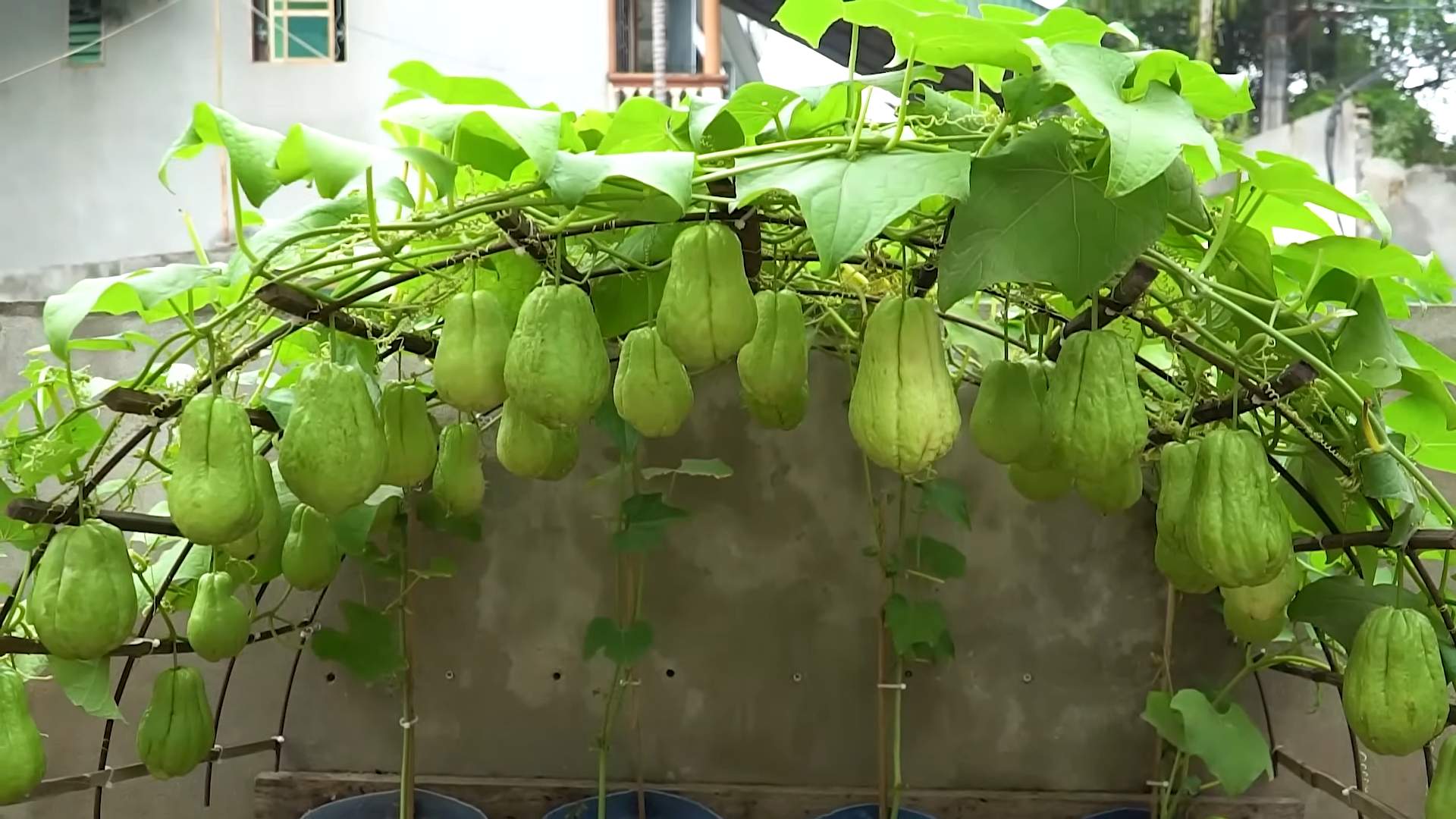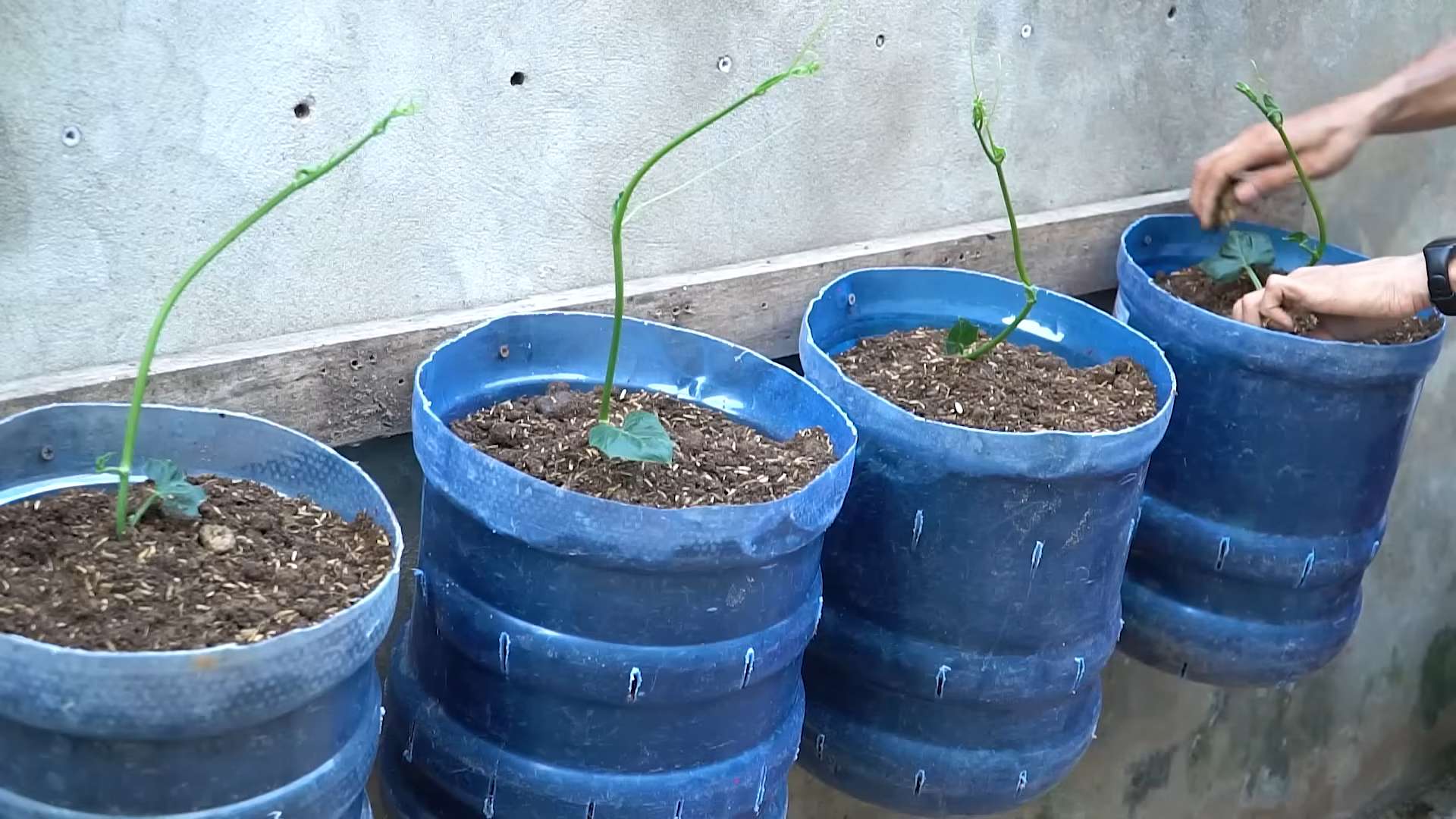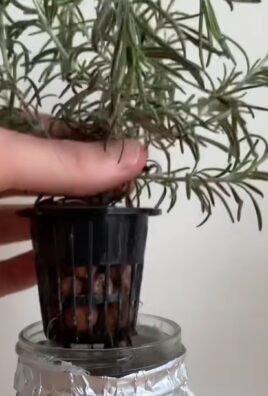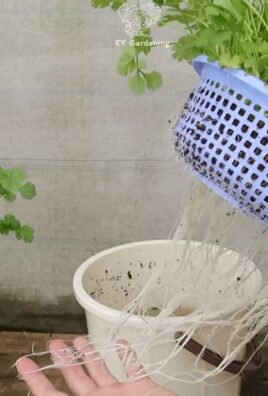Grow carrots at home? Absolutely! Imagine plucking vibrant, sweet carrots straight from your own backyard – fresher than anything you’ll find at the grocery store. For centuries, cultivating our own food has been a deeply satisfying human endeavor, connecting us to the earth and providing nourishment. From ancient civilizations tending their kitchen gardens to modern-day urban farmers, the desire to nurture life from seed to table is ingrained in us.
But let’s be honest, sometimes the idea of gardening feels a little daunting, right? Maybe you’ve tried before and ended up with stunted, forked carrots, or maybe you’re just not sure where to even begin. That’s where these simple, yet effective, DIY tricks come in. I’m here to share some of my favorite hacks that will help you grow carrots at home successfully, even if you’re a complete beginner.
This isn’t just about saving money (though that’s a definite perk!). It’s about knowing exactly what’s going into your food, reducing your environmental footprint, and experiencing the pure joy of watching something you planted flourish. So, grab your gardening gloves, and let’s dive into these easy-to-follow tips that will have you harvesting delicious, homegrown carrots in no time!

Growing Carrots at Home: A Beginner’s Guide
Okay, so you want to grow carrots at home? Awesome! It’s surprisingly easy and incredibly rewarding to pull your own fresh, sweet carrots straight from the soil. I’ve been doing it for a few years now, and I’m excited to share my tips and tricks with you. Let’s get started!
Choosing the Right Carrot Variety
First things first, you need to decide what kind of carrots you want to grow. There are tons of varieties, each with its own unique characteristics. Here’s a quick rundown of some popular choices:
* **Nantes:** These are classic, cylindrical carrots with a sweet flavor and smooth skin. They’re a great all-around choice and mature relatively quickly.
* **Danvers:** These are longer and more tapered than Nantes carrots, with a slightly stronger flavor. They’re also known for their good storage capabilities.
* **Chantenay:** These are shorter, thicker carrots that are perfect for heavier soils. They have a robust flavor and are great for cooking.
* **Baby Carrots:** These are, well, baby carrots! They mature quickly and are perfect for snacking.
* **Heirloom Varieties:** Don’t be afraid to experiment with heirloom varieties like ‘Purple Haze’ or ‘Yellowstone’. They offer unique colors and flavors.
Consider your soil type and growing space when making your decision. Shorter varieties like Chantenay are better suited for shallow or rocky soils.
Preparing Your Carrot Bed
Carrots need loose, well-drained soil to thrive. Rocks and clumps can cause them to fork and become misshapen. This is probably the most important step!
1. **Choose a Sunny Spot:** Carrots need at least 6 hours of sunlight per day.
2. **Clear the Area:** Remove any weeds, rocks, or debris from the area where you plan to plant your carrots.
3. **Loosen the Soil:** This is crucial! Use a garden fork or tiller to loosen the soil to a depth of at least 12 inches. The deeper, the better, especially for longer carrot varieties.
4. **Amend the Soil:** Mix in plenty of compost or well-rotted manure to improve drainage and fertility. Carrots prefer a slightly acidic soil pH (around 6.0 to 6.8). You can test your soil pH with a kit from your local garden center.
5. **Remove Clumps:** Break up any large clumps of soil and rake the surface smooth. You want a fine, even seedbed.
6. **Consider Raised Beds:** If you have heavy clay soil, consider growing your carrots in raised beds filled with a well-draining soil mix. This will give them the best chance of success.
Planting Carrot Seeds
Carrot seeds are tiny, so planting them can be a bit tricky. But don’t worry, I’ll walk you through it.
1. **Check the Planting Time:** Carrots are a cool-season crop, so you can plant them in early spring or late summer. Check your local frost dates to determine the best time to plant. I usually plant mine a few weeks before the last expected frost in spring and again about 10 weeks before the first expected frost in fall.
2. **Create Furrows:** Use a hoe or your finger to create shallow furrows in the soil, about 1/4 to 1/2 inch deep and 1-2 inches apart.
3. **Sow the Seeds:** Sprinkle the carrot seeds thinly along the furrows. This is the hardest part! Try to avoid overcrowding the seeds, as this will make thinning them later much easier. You can use a seed dispenser or mix the seeds with sand to make them easier to handle.
4. **Cover the Seeds:** Gently cover the seeds with a thin layer of soil.
5. **Water Gently:** Water the area gently with a watering can or hose with a gentle spray nozzle. Be careful not to wash away the seeds.
6. **Keep the Soil Moist:** Keep the soil consistently moist until the seeds germinate. This may require watering daily, especially in dry weather.
Thinning Carrot Seedlings
Thinning is essential for giving your carrots enough space to grow. If you don’t thin them, they’ll be crowded and stunted.
1. **Wait Until Seedlings Emerge:** Once the seedlings are about 2 inches tall, it’s time to thin them.
2. **Thin to 1-2 Inches Apart:** Carefully pull out the weaker seedlings, leaving the strongest ones spaced about 1-2 inches apart.
3. **Thin Again Later:** When the remaining seedlings are about 4 inches tall, thin them again to 3-4 inches apart. This will give them even more room to grow.
4. **Water After Thinning:** Water the area after thinning to help settle the soil around the remaining seedlings.
Caring for Your Carrot Plants
Once your carrots are established, they’re relatively low-maintenance.
1. **Water Regularly:** Water your carrots regularly, especially during dry weather. Aim for about 1 inch of water per week.
2. **Weed Regularly:** Keep the area around your carrots free of weeds. Weeds compete with carrots for nutrients and water.
3. **Fertilize Sparingly:** Carrots don’t need a lot of fertilizer. If your soil is poor, you can side-dress them with a balanced fertilizer a few weeks after thinning.
4. **Mulch:** Apply a layer of mulch around your carrot plants to help retain moisture, suppress weeds, and regulate soil temperature. Straw, hay, or shredded leaves work well.
5. **Watch for Pests and Diseases:** Carrots are generally pest-resistant, but they can be susceptible to certain pests and diseases, such as carrot rust fly and leaf blight. Inspect your plants regularly and take action if you notice any problems.
Harvesting Your Carrots
The moment you’ve been waiting for!
1. **Check Maturity Dates:** Check the seed packet for the estimated maturity date of your carrot variety.
2. **Look for Size:** You can also harvest carrots when they reach the desired size.
3. **Loosen the Soil:** Before pulling your carrots, loosen the soil around them with a garden fork.
4. **Pull Gently:** Grasp the carrot tops firmly and gently pull them straight up. If they’re difficult to pull, try wiggling them back and forth.
5. **Wash and Store:** Wash your carrots thoroughly and store them in the refrigerator. They’ll keep for several weeks.
Troubleshooting Common Carrot Problems
Even with the best care, you might encounter some problems when growing carrots. Here are a few common issues and how to address them:
* **Forked Carrots:** This is usually caused by rocks or compacted soil. Make sure to prepare your soil thoroughly before planting.
* **Stunted Growth:** This can be caused by poor soil, lack of sunlight, or overcrowding. Make sure your carrots have enough sunlight, water, and nutrients, and thin them properly.
* **Bitter Taste:** This can be caused by hot weather or inconsistent watering. Keep the soil consistently moist and provide shade during the hottest part of the day.
* **Carrot Rust Fly:** This pest lays its eggs near the base of carrot plants, and the larvae burrow into the roots, causing damage. Cover your plants with row covers to prevent the flies from laying eggs.
* **Leaf Blight:** This fungal disease causes spots on the leaves. Improve air circulation around your plants and avoid overhead watering.
Extra Tips for Carrot Growing Success
* Succession Planting: Plant carrots every few weeks to ensure a continuous harvest throughout the growing season.
* Companion Planting: Plant carrots alongside other vegetables like onions, garlic, and rosemary. These plants can help deter pests and improve the flavor of your carrots.
* Don’t Overwater: While carrots need consistent moisture, overwatering can lead to root rot.
* Rotate Crops: Avoid planting carrots in the same spot year after year to prevent the buildup of soilborne diseases.
* Enjoy the Process: Growing carrots is a rewarding experience. Don’t be afraid to experiment and learn from your mistakes.
Growing carrots at home is a fun and rewarding experience. With a little bit of preparation and care, you can enjoy fresh, delicious carrots straight from your garden. Happy gardening!

Conclusion
So, there you have it! Growing carrots at home, while it might seem daunting at first, is surprisingly achievable and incredibly rewarding. Forget those bland, store-bought carrots that lack that vibrant, earthy sweetness. With a little patience and these simple steps, you can cultivate your own supply of crisp, flavorful carrots right in your backyard or even on your balcony.
But why is this DIY trick a must-try? Beyond the superior taste, growing your own carrots offers a connection to your food that you simply can’t get from purchasing them at the grocery store. You control the entire process, from the quality of the soil to the type of fertilizer used (or not used!). This means you can ensure your carrots are free from harmful pesticides and herbicides, providing you and your family with a healthier, more natural vegetable. Plus, there’s an undeniable satisfaction that comes from harvesting something you’ve nurtured from a tiny seed. It’s a tangible accomplishment that connects you to the earth and the cycle of life.
And the possibilities don’t stop there! Once you’ve mastered the basics, you can experiment with different varieties of carrots. Try growing colorful rainbow carrots for a visually stunning addition to your salads, or opt for shorter, round varieties like Parisian carrots if you’re limited on space. You can also play around with companion planting, pairing your carrots with herbs like rosemary or sage to deter pests and enhance their flavor. Consider succession planting, sowing seeds every few weeks, to ensure a continuous harvest throughout the growing season.
Growing carrots at home is more than just a gardening project; it’s an investment in your health, your well-being, and your connection to nature. It’s a chance to learn, to experiment, and to enjoy the fruits (or rather, vegetables!) of your labor.
We wholeheartedly encourage you to give this DIY trick a try. Don’t be afraid to get your hands dirty and embrace the learning process. Even if you encounter a few challenges along the way, the reward of harvesting your own homegrown carrots will be well worth the effort.
And most importantly, we want to hear about your experience! Share your tips, your triumphs, and even your failures in the comments below. Let’s create a community of home gardeners who are passionate about growing their own food and sharing their knowledge with others. What varieties did you try? What challenges did you face? What advice would you give to a first-time carrot grower? Your insights could be invaluable to someone just starting out. So, get planting, get growing, and get sharing! Let’s cultivate a world where everyone has access to fresh, healthy, homegrown carrots.
Frequently Asked Questions (FAQ)
What kind of soil is best for growing carrots?
Carrots thrive in loose, well-drained soil that is free of rocks and clumps. Rocky soil can cause the carrots to fork or become stunted. Sandy loam is ideal, as it allows for easy root penetration. Amend heavy clay soil with compost, aged manure, or other organic matter to improve drainage and aeration. The soil pH should be between 6.0 and 6.8. Before planting, till the soil to a depth of at least 12 inches to ensure the carrots have plenty of room to grow downwards.
How often should I water my carrots?
Consistent moisture is crucial for carrot growth, especially during germination and early development. Water deeply and regularly, aiming to keep the soil consistently moist but not waterlogged. A good rule of thumb is to water when the top inch of soil feels dry to the touch. During hot, dry weather, you may need to water more frequently. Consider using a soaker hose or drip irrigation to deliver water directly to the roots and minimize water loss through evaporation. Avoid overhead watering, as this can promote fungal diseases.
When is the best time to plant carrots?
Carrots are a cool-season crop and are best planted in early spring or late summer for a fall harvest. In areas with mild winters, you can even plant carrots in the fall for a winter harvest. The ideal soil temperature for germination is between 55°F and 75°F (13°C and 24°C). Check your local frost dates to determine the best planting time for your region. For a continuous harvest, consider succession planting, sowing seeds every 2-3 weeks throughout the growing season.
How do I prevent carrot flies from attacking my crop?
Carrot flies are a common pest that can damage carrot roots. To prevent carrot fly infestations, consider the following strategies:
* Use row covers: Cover your carrot bed with fine mesh row covers to prevent carrot flies from laying their eggs near the plants.
* Practice crop rotation: Avoid planting carrots in the same location year after year, as this can allow carrot fly populations to build up in the soil.
* Remove weeds: Keep your garden free of weeds, as they can provide shelter for carrot flies.
* Companion planting: Plant carrots alongside strong-smelling herbs like rosemary, sage, or marigolds, which can help to deter carrot flies.
* Apply nematodes: Beneficial nematodes can be applied to the soil to control carrot fly larvae.
Why are my carrots forking or splitting?
Forking or splitting carrots are often caused by uneven watering, rocky soil, or overcrowding. To prevent this, ensure that your soil is loose, well-drained, and free of rocks and clumps. Water consistently and deeply, especially during dry periods. Thin your carrot seedlings to provide adequate spacing between plants. Avoid using excessive amounts of nitrogen fertilizer, as this can also contribute to forking.
How do I know when my carrots are ready to harvest?
Carrots are typically ready to harvest when they reach the desired size and color. Check the seed packet for the expected maturity date for your specific variety. Gently loosen the soil around the carrots and pull them up by the greens. If the carrots are difficult to pull, use a garden fork to lift them from the soil. Harvest carrots on a dry day to prevent them from rotting.
Can I grow carrots in containers?
Yes, carrots can be successfully grown in containers, especially shorter, round varieties like Parisian carrots. Choose a container that is at least 12 inches deep and wide to allow for adequate root growth. Use a well-draining potting mix and water regularly. Place the container in a sunny location that receives at least 6 hours of sunlight per day.
What are some good companion plants for carrots?
Carrots benefit from being planted alongside certain companion plants that can help to deter pests, improve soil health, or enhance their flavor. Some good companion plants for carrots include:
* Onions and garlic: These plants repel carrot flies.
* Rosemary and sage: These herbs also deter carrot flies and other pests.
* Marigolds: Marigolds attract beneficial insects that prey on carrot pests.
* Lettuce and radishes: These fast-growing crops can be planted between rows of carrots to help suppress weeds.
* Beans and peas: These legumes fix nitrogen in the soil, which can benefit carrot growth.




Leave a Comment